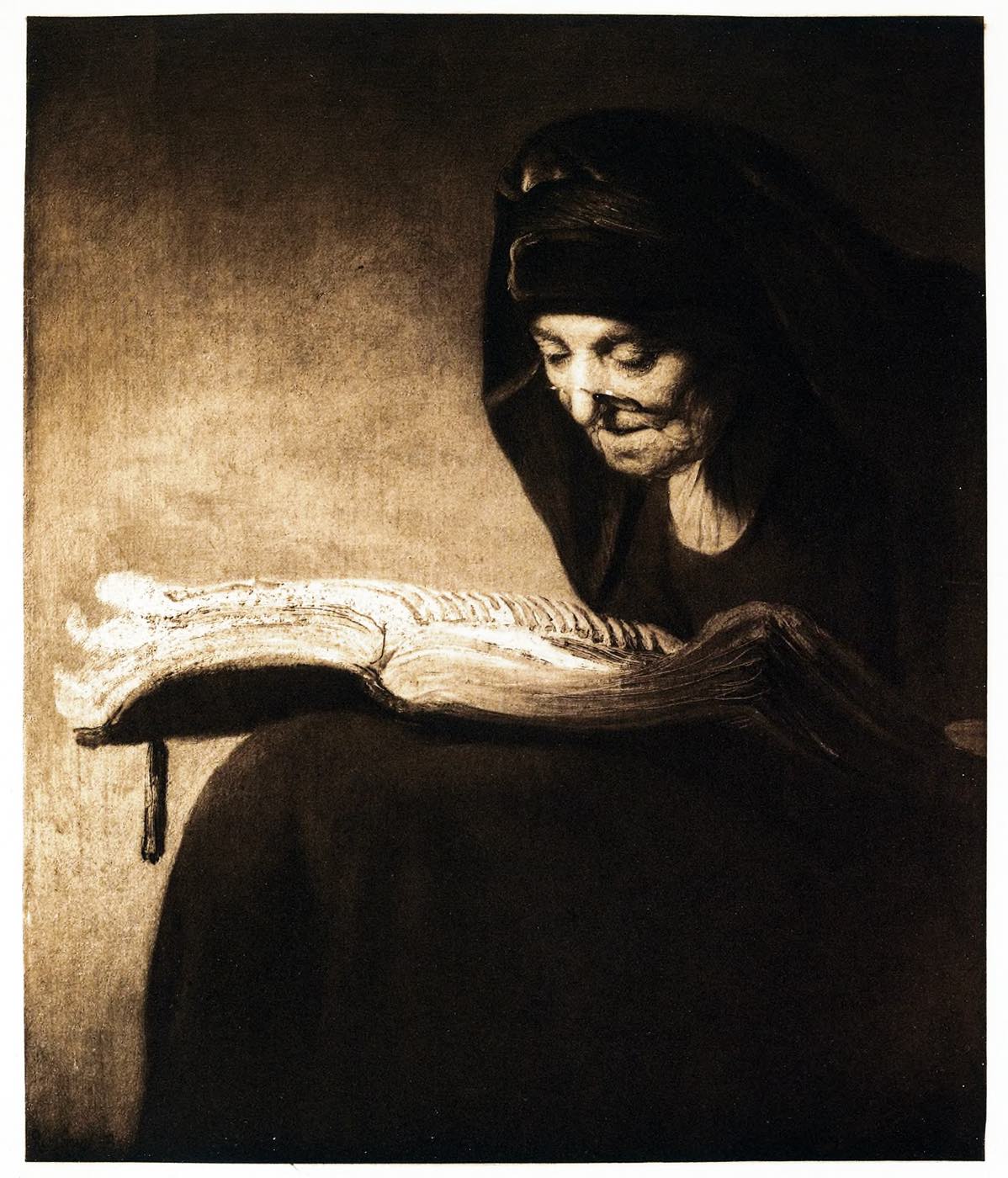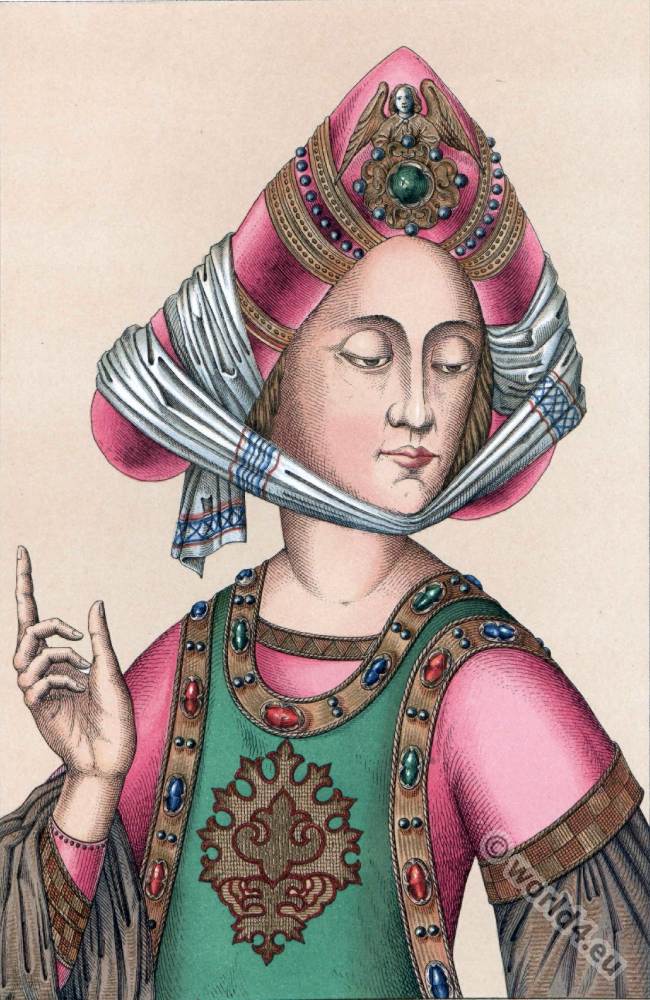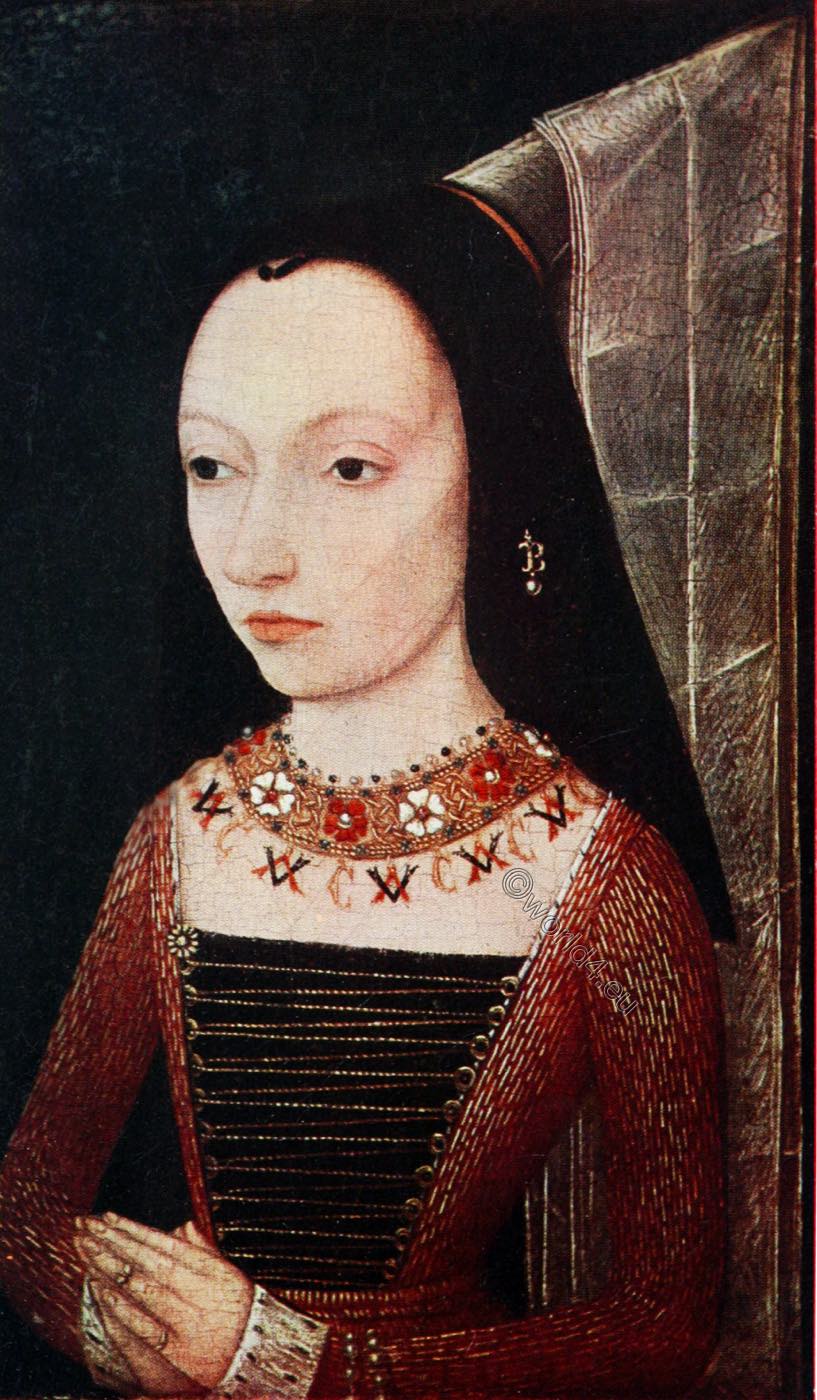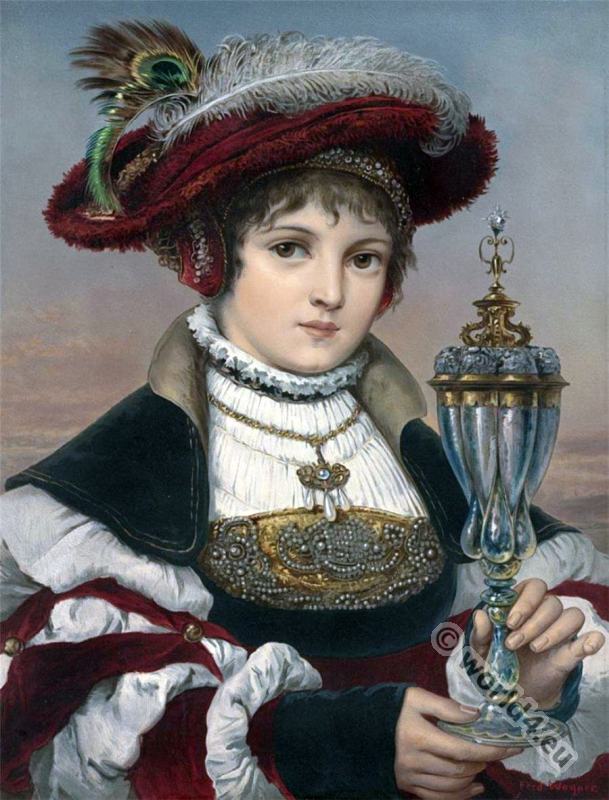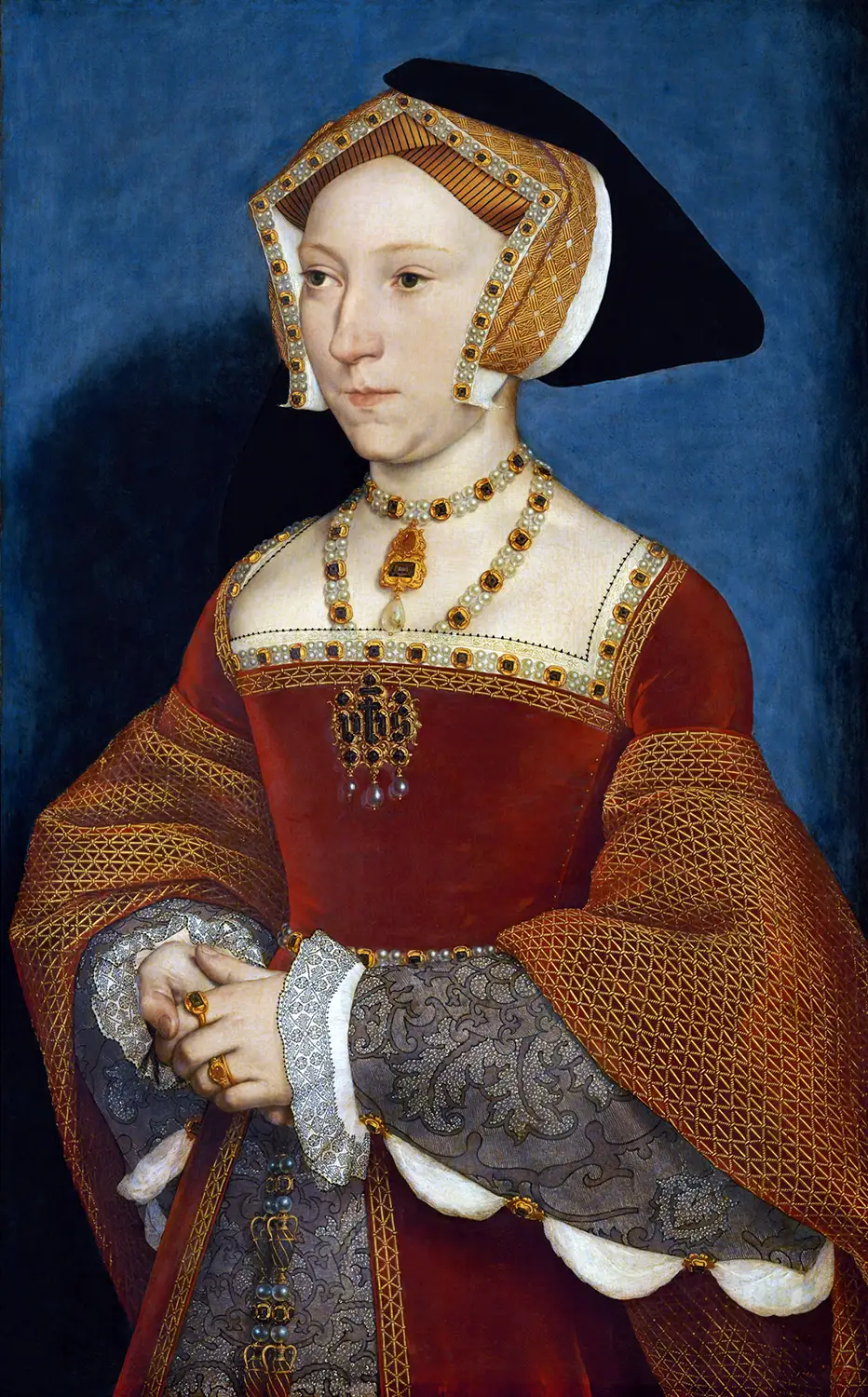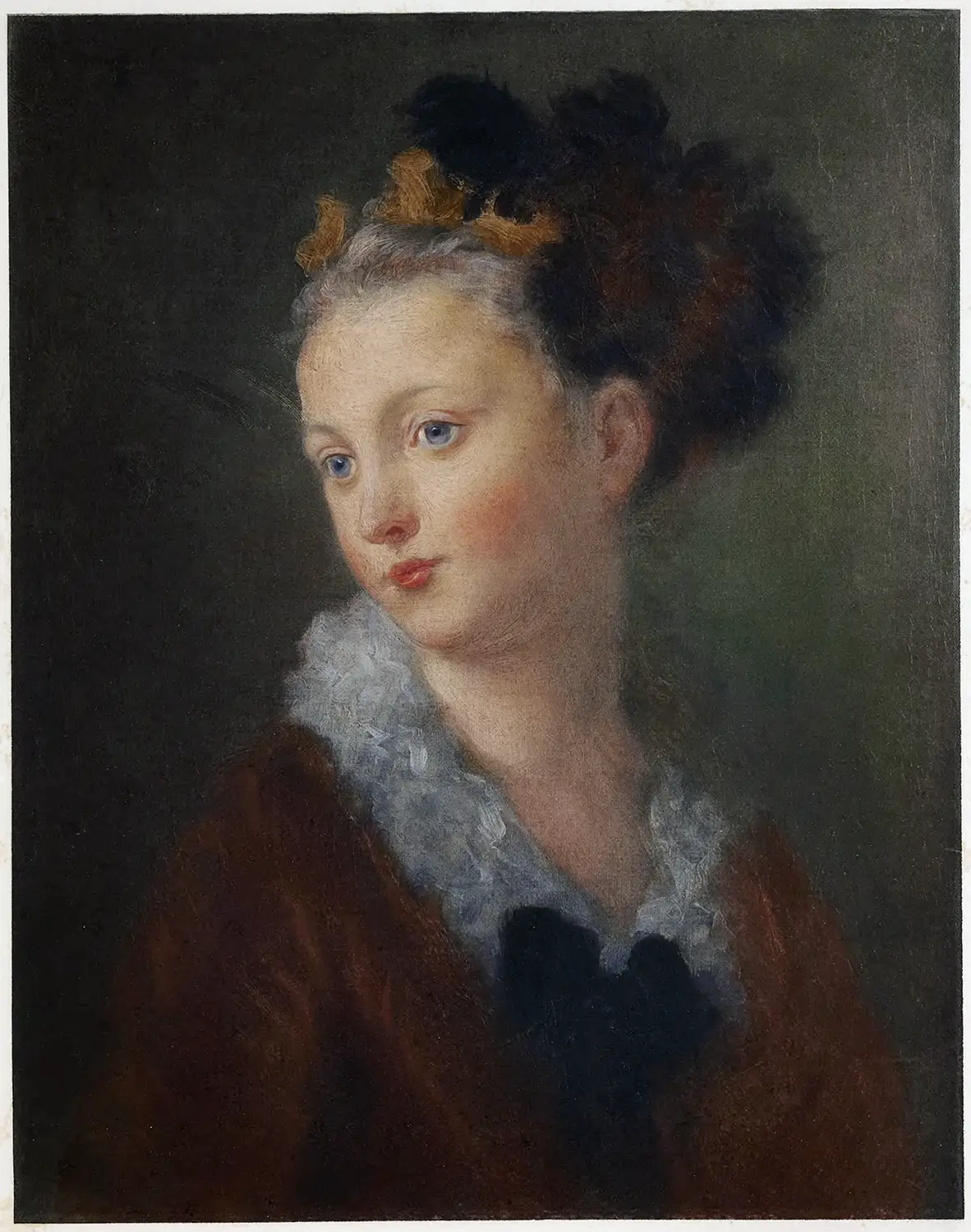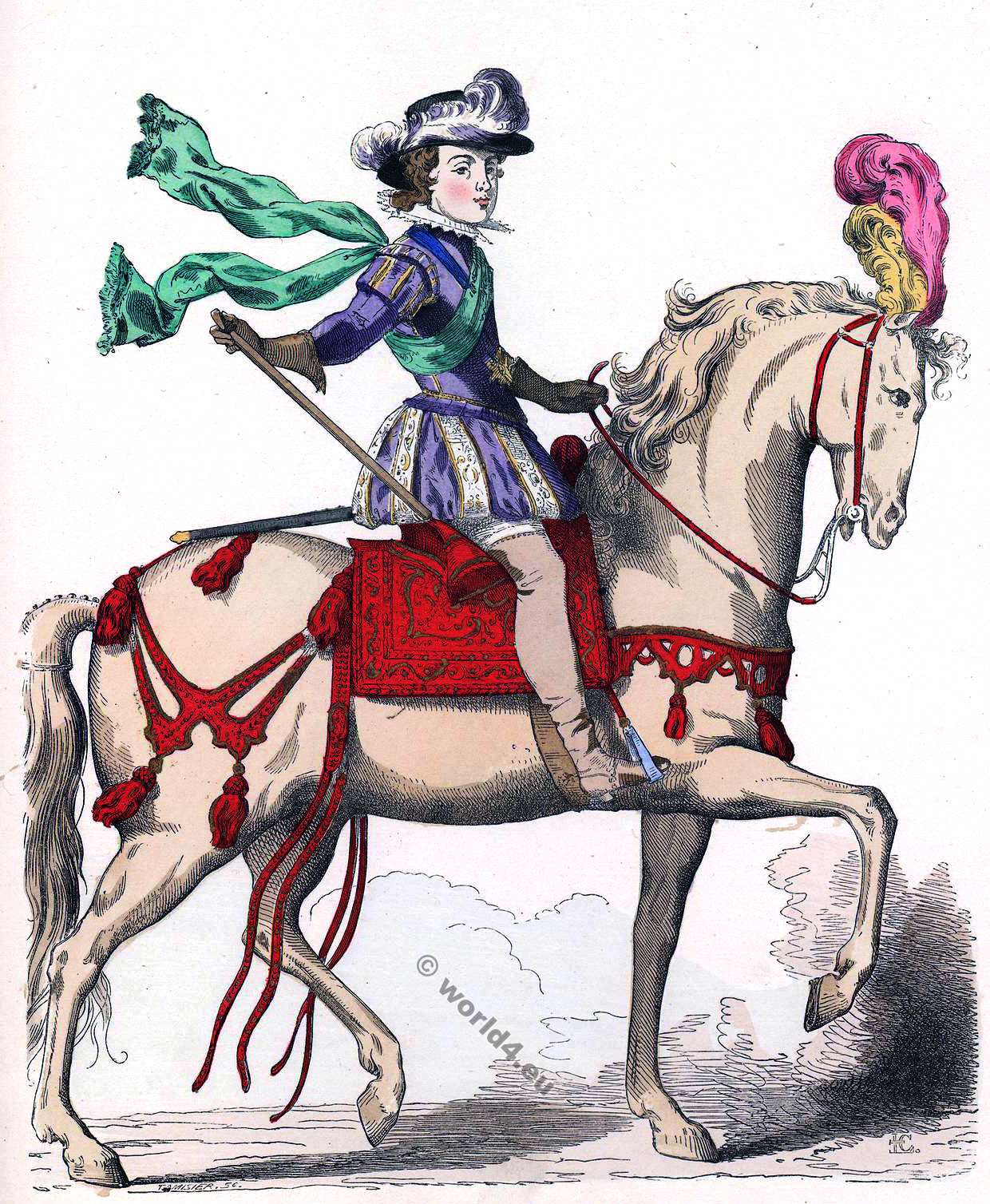PORTRAIT OF HIS MOTHER.
Rembrandt van Rijn.
30 in. H. 26 in. W. Canvas. Colonnade Room.
An old woman reading with spectacles.
Half length, seated, turning to her left,stooping over a large open book which lies on a table before her. She wears gold-rimmed glasses, and on her head a wide purple velvet hood, which falls on her shoulders behind. Brownish gown, showing the fastening of the pleated chemise at the throat. Dark gray underdress, light gray background. Rather less than life-size.
Below, to the spectator’s left, is the signature, “Rembrant P.” which is noticeable for the absence of the “d.” I am very doubtful about the authenticity of this signature. Besides having many features in common with those to be found on other canvases at Wilton, the error in spelling and the substitution of the letter “p” for the “f” or “ft” usually found in genuine signatures, and the absence of a date all tend to suggest that this is the work of a later hand. There is, fortunately, no doubt as to the authenticity of the painting itself. Both Dr. Bode 1) and M. Emile Michel 2) are agreed that it was painted about 1629, just before the painter left his father’s home at Leyden for Amsterdam.
The latter point sout that the portrait at Windsor Castle was painted about the same time, and that the colouring in both is gray and pale, but the handling is more skilful than in earlier examples, and the greenish blues and pale violets make up a delicate harmony. The treatment of the edges of the great volume is especially interesting, the lights being scraped out with the handle of the brush, a method of which Rembrandt frequently availed himself.
Neeltjen, daughter of a baker, Willem van Suytbrouck, and wife of Harmen van Rijn, frequently sat to her son; the Vienna Gallery and the Hermitage, St. Petersburg, possess portraits, while more than six of Rembrandt’s etched plates were drawn from the same model.
The Wilton picture is mentioned by Gambarini as: “Rembrandt — an old woman reading with spectacles.” It was therefore in the collection before 1730.
REMBRANDT HERMENSZ VAN RIJN.
1606-1669. Dutch School.
Born at Leyden, the son of prosperous parents, Rembrandt studied for three years under Jacob van Swanenburch, and also for a short time with Pieter Lastman at Amsterdam. From 1623 to 1630 he worked in Leyden, and then at the age of twenty-two settled in Amsterdam, where he married, four years later, his first wife, Saskia Uilenburg, awell-born lady of means.
Here his reputation gathered round him a numerous body of scholars, among them Gerard Dou, Bol, Flinck, Backer, De Wedt, De Poorter, Victors, Eeckhout, Philip Koninck, La Vecq, Ovens, Paudiss, Verdoel, Heerschop, Drost, Karel Fabritius, Hoogstraten, Maes, Renesse, Dullaert, Willemans, Mayr, Wulfhagen, G. Ulenburg, and Aart de Gelder.
In spite of his success Rembrandt incurred considerable debts, and in July, 1656, was declared insolvent. In 1665 he married his second wife, Catharina van Wijck, Saskia having died in 1642. It is generally supposed that the financial embarrassments which embittered the latter part of his life were due to his passion for collecting works of art regardless of their cost.
His misfortunes, however, did not interfere with the production of his works but rather stimulated him to greater exertions. Unable to make headway against his difficulties, he died in great poverty in Amsterdam, and was buried in the Westerkirke.
1) Bode, Rembrandt, p. 381, No. 263.
2) Emile Michel, Rembrandt, vol.i, p. 40. See also Dutuit, p.47, No.118, and Wurzbach, No. 233.
Source: Wilton house pictures; containing a full and complete catalogue and description … by Sidney Herbert Earl of Pembroke. London, Printed at the Chiswick press, 1907.
Related
Discover more from World4 Costume Culture History
Subscribe to get the latest posts sent to your email.

